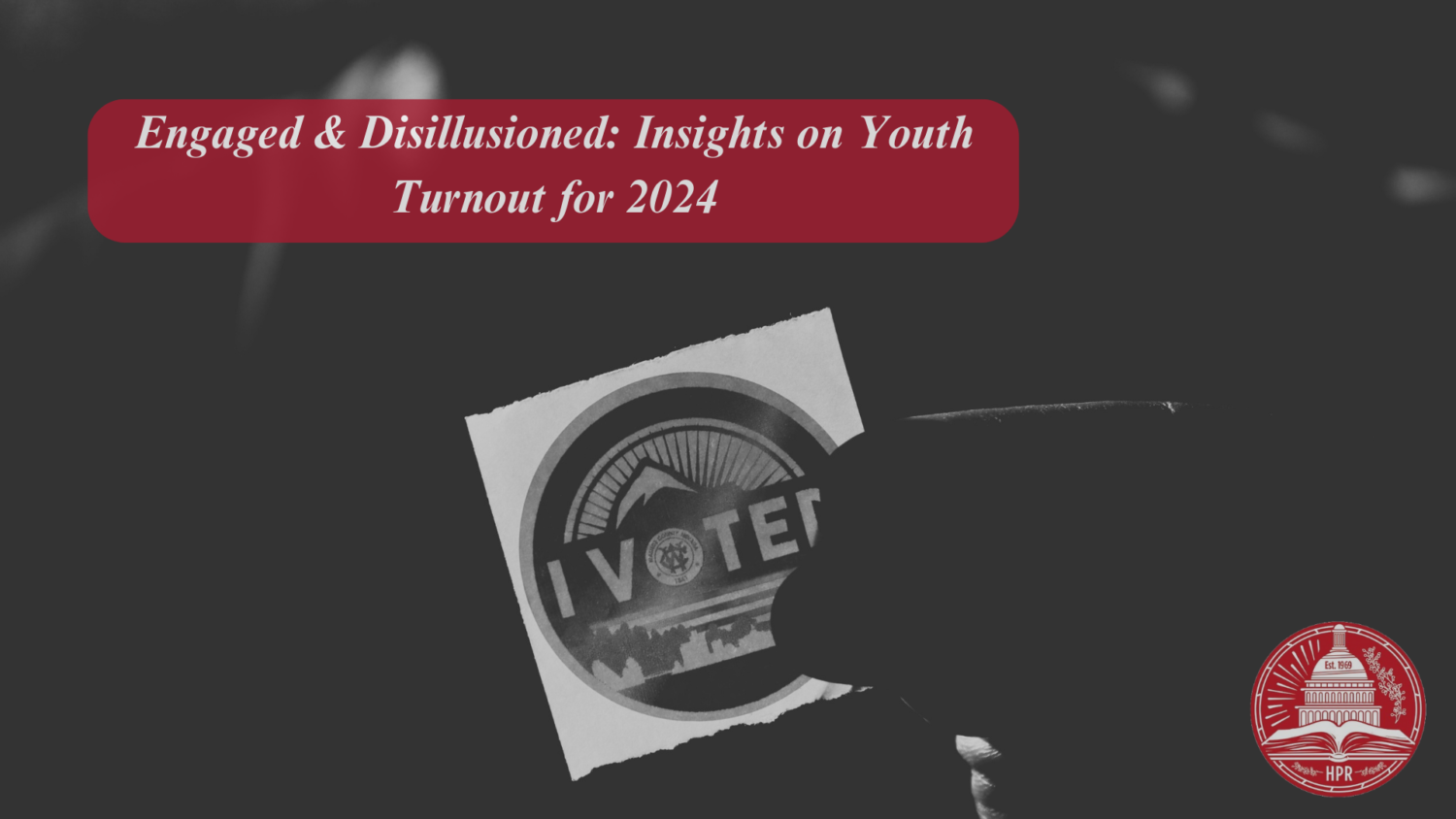Four years ago, 154.6 million voters turned out to vote in the 2020 presidential election. The record-setting numbers dominated headlines, with 67% of eligible voters casting their ballots. Voter turnout rose seven percentage points from 2016, marking the highest voting rate for any United States national election since 1900.
However, the story of 2020’s groundbreaking voter turnout is incomplete without the youth vote. According to the U.S. Census, over half of Americans under age 30 voted in the 2020 presidential election. Although this cohort represented only 15% of all 2020 voters, they accounted for 38% of new or irregular voters.
American youth are opinionated and poised to vote. Take it from young Americans themselves. Conducted by the Harvard Public Opinion Project, the biannual Harvard Youth Poll is the nation’s leading survey of political opinions and voting trends held by Americans between ages 18 and 29. Previous Harvard Youth Polls reflect similar trends in increased youth civic participation: In spring 2020, 54% of young Americans indicated they would “definitely be voting” in November 2020 — a four percentage point increase from spring 2016. In particular, Americans under age 30 grew in their support for President Joe Biden, whom they favored by 24 percentage points over former President Donald Trump.
The 2020 presidential election made one fact abundantly clear: the youth vote matters and it has the power to turn the tide of national elections. For their first year of comprising the entire 18-24 age cohort, Gen Z showed up at the ballot box: 28% of Americans between the ages of 18 and 24 voted in the 2022 midterms. That voter turnout from Gen Z surpasses that of millennials’ 23% in 2006 and Gen Xers’ 24% in 1990. Voters under 45 years of age are expected to comprise as much as half of the voting electorate in November 2024.
Released today, the 47th Harvard Youth Poll found that 53% of Americans between ages 18 and 29 “definitely” plan on voting this November. The poll shows that about as many young Americans plan on voting in the 2024 presidential election as in 2020.
These numbers are hardly reassuring. The poll also found that voters in the 18-24 age cohort are less likely to vote than those in the 25-29 age cohort, and 26% of all respondents indicated that they “probably will be voting” or are “50-50.” Just last December, the Harvard Public Opinion Project found that only 50% of respondents will “definitely be voting” in the 2024 election, which is an eight point decrease from the same time in Fall 2019. The Fall 2023 poll also found that President Biden may be losing support from young Americans over his administration’s position on the Israel-Hamas war. President Biden’s approval rating continues to decrease, falling from 35% in Fall 2023 to 31% this spring.
Young Americans are more disillusioned about their political engagement than ever. In this spring 2024 poll, 41% of respondents indicated that they “don’t believe my vote will make a real difference,” increasing three percentage points from spring 2020. Additionally, the Harvard Public Opinion Project found that 42% of young Americans believe high school did not teach them to understand the importance of their vote or were unsure on the matter. A majority of young Americans also indicated their high school did not adequately teach them how to vote, research candidates and ballot issues, find information on voting deadlines, and request and submit completed ballots.
As such, among young American voters, the paradox between continued civic engagement and increasing disillusionment with the electoral process may present one of the most serious challenges for voter turnout in 2024. Therefore, it has become increasingly crucial for campaigns to engage with this age cohort and reinforce their commitments to voting in the 2024 election.
To do so, organizers must focus on prominent issues of concern for young Americans. The newly released Harvard Youth Poll found that topics such as healthcare, inflation, jobs, and housing are top of mind for young Americans, especially among undecided voters and voters living in swing states. Such findings reflect broader concerns regarding basic financial stability and general well-being among young voters. Issues such as climate change, reproductive rights, and gun violence have also remained prominent in the popular discourse of young America. If organizers can focus on these issues and harness them for voter mobilization, they will have a better chance of capturing the youth vote.
Additionally, “get-out-the-vote” tactics and programs should be tailored to address common gaps in civic education and awareness among young voters, especially among the age cohort that is voting in their first presidential election. Last Fall, the 46th Harvard Youth Poll reported that a majority of young Americans consider deadline reminders, non-partisan voting guides, how-to-vote trainings, and conversations with friends and family to be helpful turnout tactics. Schools in particular are hubs for untapped mobilization potential; nonpartisan civic education curricula can help young Americans feel more prepared to vote and emphasize the importance of continued civic engagement.
Ultimately, the power of the youth vote will only continue to grow. In fact, young Americans may very well determine the results of the presidential election this November. 2024 is the year that candidates and their campaigns must finally address this age cohort of politically active, disillusioned voters — to listen to and empower the voices of young America.



